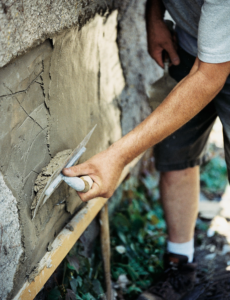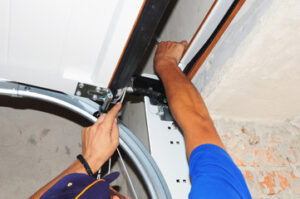Fences are structures that enclose areas and mark boundaries. They can be decorative or functional, enhancing the aesthetic of a home or business. Fences can also be used as barriers, protecting children and animals from intruders.
Innovations in materials and manufacturing techniques have driven the fence-building industry—for example, the invention of wire-stitching machines allowed for the mass production of barbed wire. Contact R.C Fence LLC now!

Electric fences are non-lethal but highly effective tools for deterring criminal activity. Many businesses, especially those that store rare or expensive merchandise, use these systems to keep criminals out of buildings and prevent them from trespassing onto private property. Many companies also use them as part of building intrusion protection to safeguard interior doors and windows. To achieve maximum security, an electric fence requires a high-quality energizer, wire poles, a grounding rod and a monitoring system.
An electric fence works by completing an electrical circuit when it is touched by an animal. A component called a power energizer converts electricity into an electric pulse, which runs along a bare insulated wire at a frequency of around once per second. The other end of the wire is connected to a metal rod implanted in the ground, called a grounding rod. When an animal touches the energizer and the grounding rod at the same time, they complete the circuit and receive a shock.
A quality energizer will produce short pulses of high voltage with low amperage to protect livestock, pets and humans from injury or damage. Modern energizers can also operate on solar or deep-cycle battery power for use away from AC outlets. When comparing electric fence energizers, look for those that are UL-listed or approved by a national standards organization, such as CSA.
For best results, an electric fence should be monitored on a regular basis. This will help you to quickly locate any problems with the system, such as vegetation touching the wire or a faulty insulator. You should also check that your grounding system is working properly. A good way to do this is to use a digital voltmeter, such as the Dare #2411 Digital Voltmeter, to measure the voltage on the grounding rod. If the voltage reading is higher than 300 volts, you will need to add more ground rods to increase the safety of the system. You should add more rods and recheck the voltage until it reads less than 300 volts.
Wood Fences
Wood fences are a timeless choice for home and business owners looking to create a private space. They are versatile and can be stained or painted to match the environment surrounding them. They are also easy to maintain and offer a natural aesthetic that is appealing to many homeowners. Depending on the type of wood used, a wood fence can last up to 20 years or more with proper maintenance and upkeep.
Wooden fencing is also a great option for individuals who are eco-conscious. It is a renewable resource and can be treated with eco-friendly preservatives to protect it from rot and pests. It is also biodegradable, so it can be repurposed or disposed of without harming the environment.
Some of the most popular options for wood fences include cedar and redwood. Both are known for their luster and beauty, and they resist shrinking, warping and insects better than other types of wood. However, cedar is prone to moisture and must be sealed after setup and each year afterwards. Redwood, on the other hand, has excellent rot and insect resistance. It is a bit more expensive than cedar, but it has a gorgeous color and can last up to 30 years or more.
Oak and cypress are also good choices for wooden fences. They are resistant to rot and insects but not as strong as cedar or redwood. Cypress has a naturally occurring compound called cypretine that helps to protect it from bugs and rot. It is on the cheaper side, but it is still more costly than other options like chain link fencing.
It is important to choose a wood fence that can withstand the climate in which you live. Some types of wood are more durable than others, so it is a good idea to invest in a more expensive option that will last for decades. It may end up saving you money in the long run. It is also a good idea to minimize contact between your fence and the ground, plants or trees. Excessive vegetation and dirt can allow moisture into the wood, which can loosen pickets or cause structural issues with posts.
Chain Link Fences
Chain link fences have long been one of the most popular styles of commercial and residential fencing. They offer high levels of security and can be customized to fit different needs. For example, slats can be inserted into the mesh to create a more privacy-oriented fence.
A chain link fence’s frame is made from steel tubing that connects to steel posts on the side. This tubing is then held together with rail clamps and capped with top caps. Inside of the tubing, there is a wire mesh that is made up of individual metal strands woven together to form a diamond pattern. The strands are typically 9, 11, or 11+1/2 gauge and can be any length.
Another component of a chain link fence is the selvage. This is the way that excess wire is finished off at the end of a section of fence. There are two common ways to do this – knuckle and twist selvage. The most important thing to remember about selvage is that it can significantly impact the durability of a chain link fence.
The best way to make sure a chain link fence lasts is by properly maintaining it. To do this, it is important to remove vines, flowers, and sucker trees from your property that may be attempting to grow up the fence. This can cause the fence to sag or pull away from its posts. It is also important to inspect the connections between posts, as these can loosen over time. If a connection becomes loose or the gate begins to sag, it should be replaced immediately.
Finally, it is important to keep in mind that a chain link fence isn’t able to provide as much privacy as a wood or vinyl fence. While slats can be added to a chain link fence, they do not provide the same level of privacy that you would get from a privacy or trellised fence. In addition, it is important to consider what you are using the fence for and how much privacy you will need from your neighbors before deciding on a chain link fence.
Privacy Fences
Privacy fences are a popular choice for homeowners looking to add curb appeal and a sense of seclusion to their outdoor spaces. They are available in a wide range of materials and can be customized to complement the look of any home or garden design. The type of material you choose will have a significant impact on your privacy needs and budget. Wood, vinyl and composite fencing offer varying levels of durability and maintenance requirements.
A privacy fence can block out views of your backyard from neighbors and passersby, creating a sense of seclusion for your family to enjoy without the worry of being watched. In addition, a privacy fence can help delineate your property line, reducing the chances of encroachment by neighbors or disputes with neighboring homes.
Adding a privacy fence can also reduce noise pollution from traffic, commercial areas and noisy neighbors. This can help create a peaceful and relaxing environment for outdoor activities and can be especially beneficial in urban or suburban settings where these types of disturbances are often common.
In terms of aesthetics, a privacy fence can enhance the beauty of your yard and provide a backdrop for garden beds and outdoor art. It can also block harsh sunlight, allowing you to spend more time in your outdoor space throughout the year without discomfort.
When choosing a privacy fence, it is important to consider local building codes and homeowner association regulations that may impact your choice of materials and construction. These regulations may dictate maximum height restrictions, materials permitted and setback requirements. A lack of knowledge or compliance could lead to fines or the need to modify your fence.
A well-maintained privacy fence will last a long time, providing lasting beauty and functionality. It is important to periodically stain or seal the fence to prevent damage from weathering and maintain a high level of durability.








